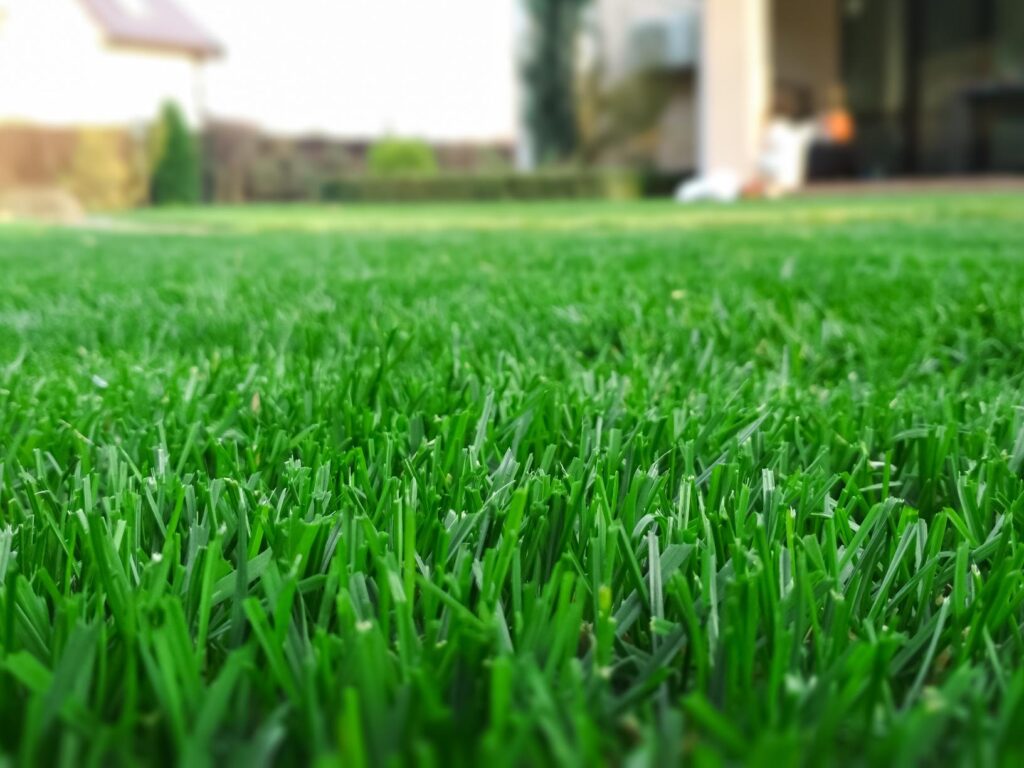
Contents
In spring, your lawn may show signs of stress from winter’s harsh conditions, making it the perfect time to conduct soil tests and apply quality fertilizers. By aerating the soil, you can relieve compaction, allowing nutrients to penetrate effectively. As the seasons progress, you’ll need to shift your focus to weed control and pest management. Understanding these seasonal treatments is essential for maintaining a lush, vibrant lawn throughout the year. What comes next might surprise you.
Key Takeaways
- Conduct soil testing in spring to identify nutrient needs and select appropriate fertilizers for optimal growth.
- Apply pre-emergent herbicides in early summer to effectively prevent the germination of summer weeds.
- Aerate and overseed in the fall to improve seed-to-soil contact and enhance turf density and health.
- Use winter mulching techniques to insulate the lawn and suppress weeds during cold months.
- Maintain efficient irrigation practices year-round, ensuring deep but infrequent watering for a vibrant lawn.
Spring Lawn Fertilization and Aeration
As spring arrives and temperatures rise, it’s important to give your lawn the care it needs through fertilization and aeration.
Start by conducting soil testing to determine your lawn’s specific nutrient needs. This step is significant, as it helps you understand the nutrient balance required for ideal growth.
Once you’ve analyzed the results, choose a high-quality fertilizer tailored to your soil’s deficiencies. Apply it evenly across your lawn, ensuring you follow the recommended rates to avoid over-fertilization.
Next, aeration plays an essential role in promoting healthy root development. By using a core aerator, you’ll relieve soil compaction and allow air, water, and nutrients to penetrate deeper into the soil.
Aim to aerate when the soil is moist but not soggy.
With these methods, you’ll nurture a lush, vibrant lawn that enhances your outdoor space, creating a welcoming environment for family and friends.
Summer Weed Control and Pest Management
After verifying your lawn is well-fertilized and aerated in spring, it’s time to tackle the ongoing challenges of summer: weed control and pest management.
Start by applying pre-emergent herbicides to prevent summer weeds from taking hold. Timing is vital; aim for application before weeds germinate, usually early in the summer.
Next, focus on insect pest identification. Regularly inspect your lawn for signs of pests like grubs, chinch bugs, or sod webworms. Early detection is key to effective treatment. If you spot any, consider applying targeted insecticides, confirming they’re safe for your lawn type.
Maintain a healthy watering schedule, as stressed grass is more susceptible to both weeds and pests.
Fall Overseeding and Turf Restoration
Embrace the opportunity of fall to rejuvenate your lawn through overseeding and turf restoration. This is the perfect season to enhance your grass density and health. Start by applying a fall soil amendment to enrich the nutrient profile of your soil. Next, utilize effective overseeding techniques to ensure successful germination.
| Step | Details |
|---|---|
| Soil Preparation | Aerate the lawn before seeding. |
| Seed Selection | Choose a mix suitable for your region. |
| Watering Routine | Keep the soil consistently moist. |
Winter Lawn Preparation and Protection
Following the revitalization efforts of fall overseeding and turf restoration, winter preparation becomes essential for maintaining your lawn’s health through the colder months.
Start by applying winter mulching techniques. A layer of organic mulch insulates the soil and suppresses weeds, ensuring your grass remains healthy beneath the surface.
Next, implement effective frost protection methods. Consider using frost cloths or lightweight tarps to shield vulnerable areas during extreme cold snaps. This simple step can prevent frost damage, keeping your lawn vibrant and intact.
Additionally, avoid heavy foot traffic on the grass when it’s frozen. This prevents compaction and damage to root systems, allowing your lawn to breathe.
Year-Round Lawn Maintenance Best Practices
While maintaining a healthy lawn year-round might seem challenging, implementing a consistent maintenance routine can yield impressive results. Start by evaluating your soil health; a soil test can reveal its nutrient levels and pH balance. Based on the results, amend your soil with the necessary fertilizers or organic matter to foster robust growth.
Next, adopt efficient irrigation practices. Water deeply but infrequently to encourage deep root development, ideally early in the morning to reduce evaporation. Aim for about an inch of water per week, adjusting based on seasonal rainfall.
Mowing regularly at the appropriate height promotes a dense lawn that can better resist pests and diseases.
Don’t forget to aerate your lawn annually; this enhances nutrient uptake and improves drainage. By staying committed to these best practices, you’ll cultivate a vibrant lawn that enhances your home’s curb appeal and fosters a sense of community pride.
Review
By following these essential seasonal treatments, you can transform your lawn into a lush oasis. Spring’s fertilization and aeration set a strong foundation, while summer’s weed control keeps your grass healthy. Fall overseeding rejuvenates your turf, and winter preparation safeguards against harsh conditions. Remember, consistent care throughout the year isn’t just a theory—it’s proven to yield vibrant results. With dedication and the right practices, your lawn can thrive in every season, showcasing its beauty and resilience.
Recent Posts
3 Best Weed Control Techniques for Grand Rapids Lawns
Many homeowners underestimate the importance of a strong grass foundation in weed control. A healthy
5 Tips for Managing Weeds in Grand Rapids Lawns
Managing weeds in Grand Rapids lawns can be a challenge, especially with the diverse range
Top 10 Weed Management Tips for Grand Rapids Lawns
Managing weeds in your Grand Rapids lawns requires a strategic approach. By understanding the common